#postminimalist
Photo

The Fall of Troy (2023), acrylic on canvas 100 x 120cm.
#contemporaryart#abstractpainting#minimal#minimalism#minimalist#minimalstyle#postminimalism#postminimal#postminimalist#contemporarypainting#artcollector#artcollectors#artcurator#artcurators#abstractart#abstractartist#stephenwhatcott#whatcott#arte#art#artstudio#contemporaryartist#artecontemporaneo#abstractexpressionism#blackandwhitedrawing#monochromeart
13 notes
·
View notes
Text
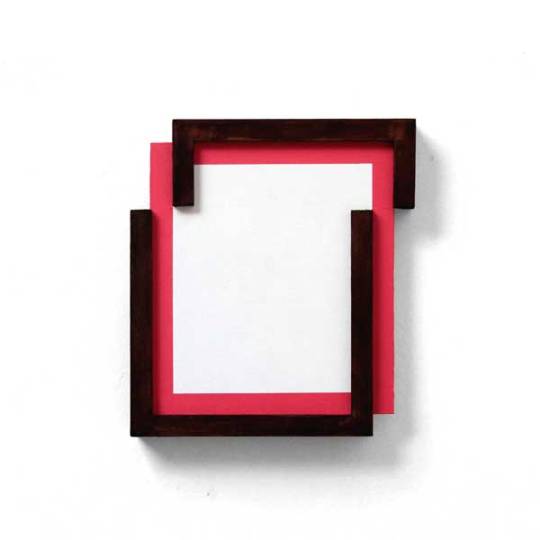
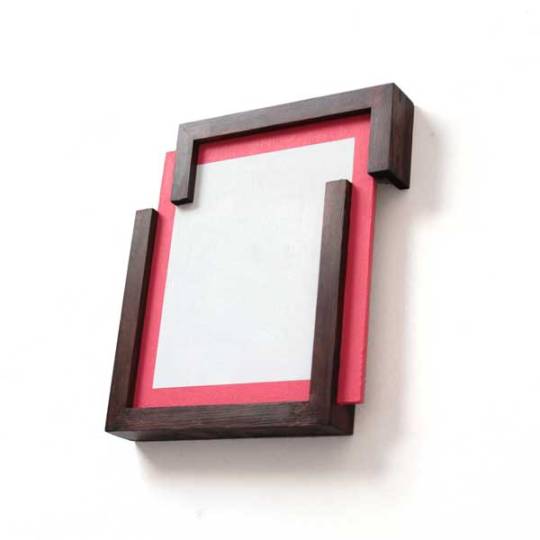

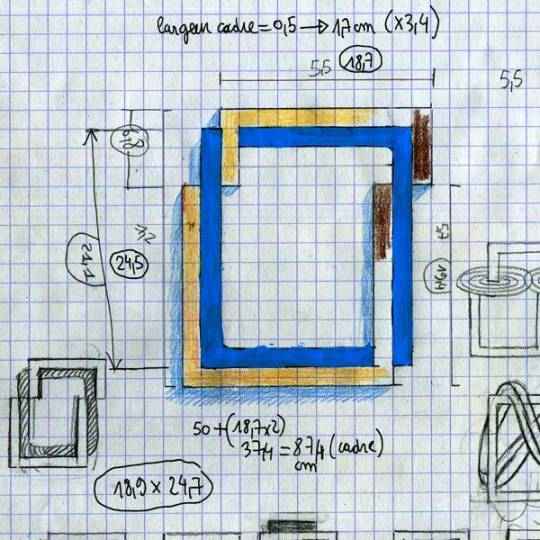
CCBR-23, acrylic, canvas and wood on cut frame, 9,7 x 8,7 x 1.4 inches
+ preparatory drawing.
CCBR-23, acrylique, toile et bois sur cadre coupé, 24,7 x 22 x 3,5 cm
+ dessin préparatoire
#cadre#frame#frameinframe#rusticframe#minimalistart#minimalistpainting#geometricart#geometricpainting#redpainting#rectangle#artoninstagram#contemporaryart#cuttingframe#brokenframe#postminimalist#postmodernism
1 note
·
View note
Photo


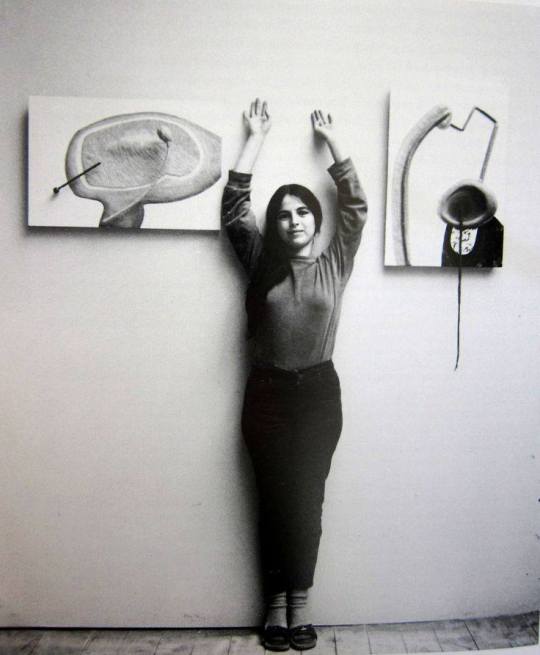
Eva Hesse (1936 – 1970), was a Jewish German-born American sculptor, known for her pioneering work in materials such as latex, fiberglass, and plastics. She is one of the artists who ushered in the postminimal art movement in the 1960s.Hesse was born into a family of observant Jews in Hamburg.
When Hesse was two years old in December 1938, her parents, hoping to flee from Nazi Germany, sent Hesse and her older sister, Helen Hesse Charash, to the Netherlands via Kindertransport.
After almost six months of separation, the reunited family moved to England and then, in 1939, emigrated to New York City, where they settled into Manhattan's Washington Heights. In 1944, Hesse's parents separated; her father remarried in 1945 and her mother committed suicide in 1946.
In 1969, she was diagnosed with a brain tumor, and she died in 1970, at the age of 34.
Her art is often viewed in light of all the painful struggles of her life including escaping the Nazis, her parents' divorce, the suicide of her mother when she was 10, her failed marriage, and the death of her father. While experiences no doubt had profound impressions on Hesse, the true impact of her artwork is in her inventive uses of material, her incredibly contemporary response to the minimalist movement, and her ability to usher in the postmodern and postminimalist art movements.
Danto describes her as "cop[ing] with emotional chaos by reinventing sculpture through aesthetic insubordination, playing with worthless material amid the industrial ruins of a defeated nation that, only two decades earlier, would have murdered her without a second thought."
In 2016, a documentary titled Eva Hesse, premiered in New York directed by Marcie Begleiter. (mostly from wikipedia)
14 notes
·
View notes
Text
Eva Hesse

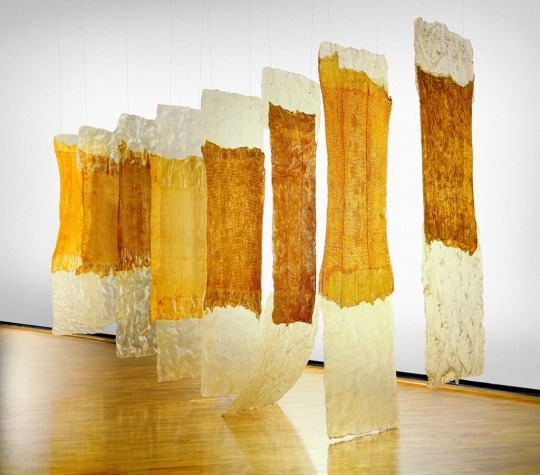

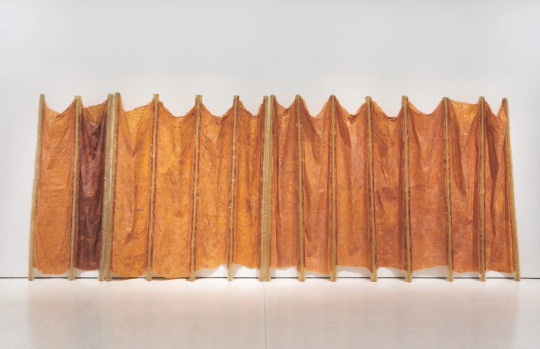
Hesse's work fits into a more minimalist, neo-surrealistic style and she likes to work in a large scale, often with installation type works. Hermove to sculpture was a later development in her life after she married a sculptor, Tom Doyle, and started experimenting in a 3D space as 2D felt limiting.
Her use of latex and natural fibres inspiredmy sculpture greatly. The natural yellows and browns give a worn and old skin look which I tried to experiment with in my own work and the draping of ropes and fibres gives an eery underlying theme whcih seems to creep into her work porbably as a result of her childhood history of being exiled to the USA and the suicide of her mother when she was young.
An interesting site to read about her and her life:
5 notes
·
View notes
Text
Eve Beglarian (born Ann Arbor, Michigan, U.S., July 22, 1958) is a contemporary American composer, performer and audio producer of Armenian descent. Her music is often characterized as postminimalist.
Her chamber, choral, and orchestral music has been commissioned and widely performed by The Los Angeles Master Chorale, the Bang on a Can All-Stars, The Chamber Music Society of Lincoln Center, The California EAR Unit, The Orchestra of St. Luke's, Relâche, The Paul Dresher Ensemble, Sequitur, and The American Composers Orchestra, among many others. She received a Foundation for Contemporary Arts Robert Rauschenberg Award (2015).
0 notes
Text
Gesture in Steve Reich's Music and its Signifification: A Referential Approach to His Process, Stylistic, and Postminimalist Works
0 notes
Photo

Keith Sonnier
Neon Wrapping Neon II, 1970
Argon and neon tubes, porcelain fixtures, incandescent bulbs, transformer
96 × 72 × 9 inches
Photo: © Caterina Verde
Courtesy Keith Sonnier Studio
68 notes
·
View notes
Photo

Still Life with Humble Slab . . . . #stilllife #printmaking #contemporaryart #worksonpaper #screenprinting #collage #abstractart #postminimalist #contemporaryprintmaking https://www.instagram.com/p/CMpD3fBFv5Q/?igshid=1ce4pyr43ai73
#stilllife#printmaking#contemporaryart#worksonpaper#screenprinting#collage#abstractart#postminimalist#contemporaryprintmaking
0 notes
Photo

My listening habits move in waves. Today, I only want to listen to classical music. Tomorrow, only metal. Yesterday, only jazz. #bethanderson #swalesandangels #classical #postminimalist #postminimalism #music #newtome #youtube #thisweekinmusic #abdreview
#swalesandangels#postminimalism#music#abdreview#thisweekinmusic#postminimalist#classical#newtome#youtube#bethanderson
2 notes
·
View notes
Photo

Apoc font in use for @arvidboecker book designed by @kontextkommunikation ・・・ The great catalogue from Verein für aktuelle Kunst /Ruhrgebiet. Thanks to Reinhard Ermen for his contribution and for the excellent design of KontextKommunikation, Heidelberg /Berlin @VfakR @kontextkommunikation @wunderhorn @blazetype ISBN : 978-3-88423-604-8 #painting #malerei #kunstverein #contemporarypainting #arvidboecker #boeckercontemporary #heidelberg #kunstheidelberg #abstract #abstraction #art #galerie #painter #minimalpainting #reductive #stadtgalerie #geometricalabstraction #postminimalist#heidelbergkunst#reductiveart https://www.instagram.com/p/Bnsu35XB2_G/?utm_source=ig_tumblr_share&igshid=1syzk9l1mn2gk
#painting#malerei#kunstverein#contemporarypainting#arvidboecker#boeckercontemporary#heidelberg#kunstheidelberg#abstract#abstraction#art#galerie#painter#minimalpainting#reductive#stadtgalerie#geometricalabstraction#postminimalist#heidelbergkunst#reductiveart
0 notes
Photo

Zita (2021), acrylic on canvas 60 x 50cm.
#abstractart#abstractpainting#abstraction#contemporaryart#contemporarypainting#minimalism#minimalstyle#minimalart#minimalist#postminimal#postminimalism#postminimalist#postminimalart#postminimalistart#postminimalismart#artistsoninstagram#arte#art#artgallery#artoftheday#artcollector#artcurator#artstudio#stephenwhatcott#whatcott#monochromeart#interiordesign#interior#design#gallery
12 notes
·
View notes
Photo


eva hesse, “ingeminate.” “enamel, cord and papier-mâché over two balloons connected with surgical hose,” 1965.
martin puryear, untitled. charcoal on paper, 1994.
11 notes
·
View notes
Photo

Eva Hesse (1936 – 1970), was a Jewish German-born American sculptor, known for her pioneering work in materials such as latex, fiberglass, and plastics. She is one of the artists who ushered in the postminimal art movement in the 1960s.
Hesse was born into a family of observant Jews in Hamburg. When Hesse was two years old in December 1938, her parents, hoping to flee from Nazi Germany, sent Hesse and her older sister, Helen Hesse Charash, to the Netherlands via Kindertransport.After almost six months of separation, the reunited family moved to England and then, in 1939, emigrated to New York City, where they settled into Manhattan's Washington Heights. In 1944, Hesse's parents separated; her father remarried in 1945 and her mother committed suicide in 1946.
In 1969, she was diagnosed with a brain tumor, and she died in 1970, at the age of 34. Her art is often viewed in light of all the painful struggles of her life including escaping the Nazis, her parents' divorce, the suicide of her mother when she was 10, her failed marriage, and the death of her father. While experiences no doubt had profound impressions on Hesse, the true impact of her artwork is in her inventive uses of material, her incredibly contemporary response to the minimalist movement, and her ability to usher in the postmodern and postminimalist art movements.
Danto describes her as "cop[ing] with emotional chaos by reinventing sculpture through aesthetic insubordination, playing with worthless material amid the industrial ruins of a defeated nation that, only two decades earlier, would have murdered her without a second thought."
In 2016, a documentary titled Eva Hesse, premiered in New York directed by Marcie Begleiter. (mostly from wikipedia)
16 notes
·
View notes
Text
Eva Hesse
For creative project I have selected Route A- Concept of Appropriation looking at the German artist Eva Hesse and her use of post-minimalism and feminism.
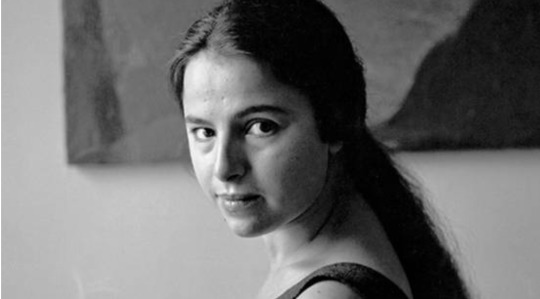
Eve Hesse (January 11, 1936 – May 29, 1970) was a German-born American sculptor known for her pioneering work in materials such as latex, fibreglass, and plastics. She is one of the artists who ushered in the postminimal art movement in the 1960s.
Hesse was born into a family of observant jews in Hamurg, Germany, on January 11, 1936. When Hesse was two years old in December 1938, her parents, hoping to flee from Nazi Germany.
After almost six months of separation, the reunited family moved to England and then, in 1939, emigrated to New York City, where they settled into Manhattan’s Washington Heights. In 1944, Hesse's parents separated; her father remarried in 1945 and her mother committed suicide in 1946. In 1962, Hesse met and married sculptor Tom Doyle (1928–2016); they divorced in 1966.
In October 1969, she was diagnosed with a brain tumour, and she died on May 29, 1970, after three failed operations within a year. Her death at the age of 34 ended a career that would become highly influential, despite spanning only a decade.
Her art is often viewed in the context of the many struggles of her life. This includes escaping from the Nazis, her parents' divorce, the suicide of her mother when she was 10, her failed marriage, and the death of her father. A 2016 documentary entitled Eva Hesse, premiered in New York, illustrated her painful background.
While experiences no doubt had profound impressions on Hesse, the true impact of her artwork has been her formal, artistic invention: for example, her inventive uses of material, her contemporary response to the minimalist movement, and her ability to usher in the postmodern and postminimalist art movements.
Hesse was among the first artists of the 1960s to experiment with the fluid contours of the organic world of nature, as well as the simplest of artistic gestures. Some observers see in these qualities latent, proto-feminist references to the female body; others find in Hesse's languid forms expressions of wit, whimsy, and a sense of spontaneous invention with casually found, or "everyday" materials. Prominent artists that have noted her as a primary influence include Japanese artist Eiji Sumi.
1 note
·
View note
Link
“ Bill Bollinger (July 15, 1939 – May 27, 1988) was an American artist. In the late 1960s, he was one of the foremost sculptors of his time, routinely mentioned in the same breath as the likes of Bruce Nauman, Robert Smithson, Eva Hesse and Richard Serra. His work can be categorized as minimalist or postminimalist art..In his works, Bill Bollinger made frequent use of standard industrially fabricated products. The artist explained his approach: “I only do what it is necessary to do. There is no reason to use color, to polish, to bend, to weld, if it is not necessary to do so.”
#art#artist#minimalism#post minimalism#Art Installation#sculpture#contemporary art#visual art#visual culture#fine art#culture#blog
1 note
·
View note
Photo

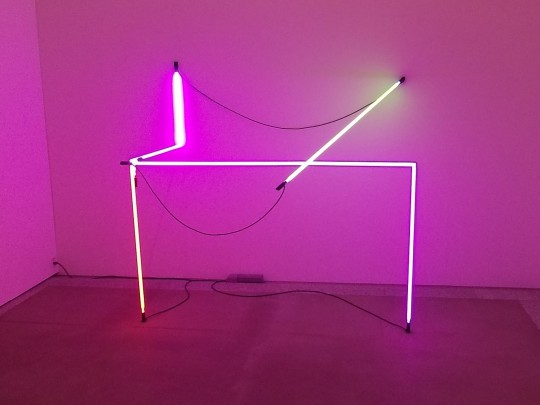
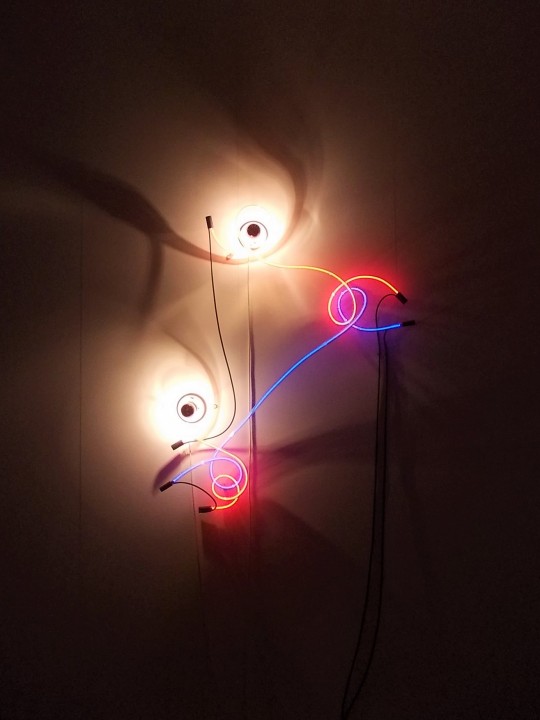
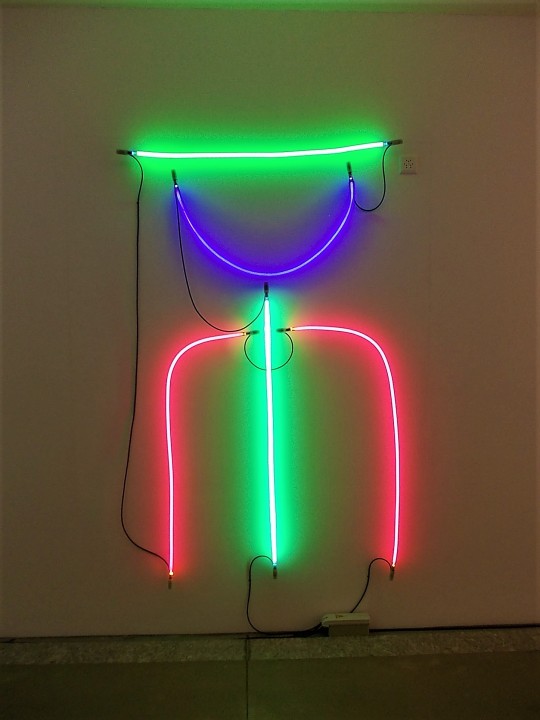



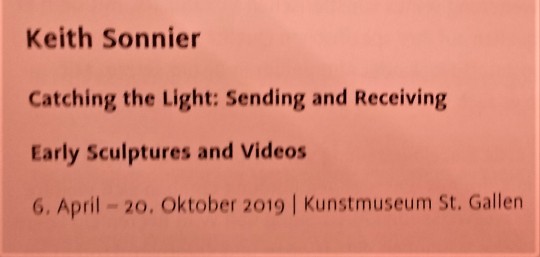
Neon sculptures by the Postminimalist American artist Keith Sonnier, one of the first artists to use light in sculpture in the 1960s.
6 notes
·
View notes